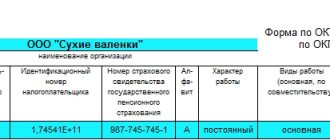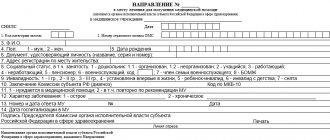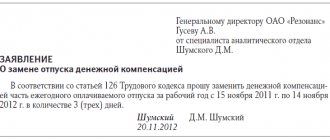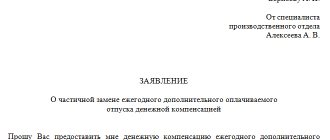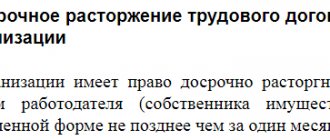Author: Maxim Potashev
While the Russian economy is hitting one bottom after another, the situation of workers is becoming especially threatening. To the threat of being fired is added downtime due to the fault of the employer. Not everyone knows how time spent on forced leave is paid. This is what unscrupulous businessmen take advantage of.
What is forced downtime?
The term refers to a temporary suspension of the activities of an enterprise .
Downtime may occur due to the fault of the employer, employee, or due to factors beyond the control of the parties. If the employer is to blame, then he is obliged to quickly eliminate the problem and minimize the financial losses of his subordinates.
According to Art. 72.2 of the Labor Code of the Russian Federation, there are four factors that cause a forced stop in the labor process . The reasons for downtime due to the fault of the employer are divided into:
- Organizational . Associated with incorrect or untimely decisions on the part of management. For example, failure to pay for raw materials for production on time led to a delay in delivery.
- Economic . A sharp deterioration in the financial condition of the company due to current market situations: economic crisis, a sharp drop in demand for products, increased competition.
- Technological . The company updates equipment, rebuilds or repurposes the technological process.
- Technical . This could be equipment breakdown due to lack of proper maintenance, suspension of the supply of utility resources for debts (electricity, water), etc.
The list is not final. It is the employer’s responsibility to determine who is responsible for the downtime. If he does not agree to admit guilt, he must prove his innocence.
If a malfunction or violation of the production process is detected by an employee, he is obliged to this orally or in writing
Business suspension
According to Articles 22 and 56 of the Labor Code, the employer must provide employees with the work described in the employment contract. In the absence of this, a situation called idle time
.
The reasons for this may be different:
- Technological
. With a sharp change in the manufacturing process, a certain period is needed to master new knowledge. Retraining is not considered a vacation and must be paid accordingly; - Technical
. This category includes all the variety of interruptions associated with problems and upgrades of means of production; - Organizational
. Delays in production processes may occur as a result of the merger or separation of departments of the company; - Economic
. The activities of an entrepreneur are associated with significant risks. A careless businessman can bring his brainchild to financial ruin.
There are other classifications of causes: by source (external and internal), by the guilty party (employer, employee, emergency).
Design rules
Step-by-step instructions on how to apply for a simple one:
- Management makes a decision on downtime if it is due to its fault. In other cases, management can only admit the fact of forced downtime.
- An order is issued and employees are notified.
- Data on downtime is sent to the employment service.
If activities are suspended at the initiative of the employer, then an order or instruction must be issued on the start date of the downtime and its duration .
It is not always possible to determine the end of downtime in advance, so its end is reported in a separate document.
The order must contain the following information:
- start and end date of temporary suspension of activities (if known);
- reasons for stopping the work process and the person responsible;
- list of employees who are subject to downtime;
- the procedure for calculating wages for this period;
- the need to leave or permission to be absent from the workplace.
The document is signed by the head of the organization or his authorized representative. The absence of a signature may be grounds for declaring downtime illegal.
Sample suspension order:
, it is necessary to notify the employment service about this within 3 days from the date of the stop . There is no set form for the message; it is compiled arbitrarily.
In this article you can read about how documents are submitted to the employment service.
What is forbidden to do during coronavirus quarantine
Personnel who, despite the recommended self-isolation regime introduced in the country, are forced to continue working, are subject to maximum protection by employers from possible infection. Employers should not expose citizens to unreasonable risks:
- oblige contact with a large number of people: if the organization’s work involves receiving visitors, such receptions must be reduced or canceled as much as possible. Thus, in many regions, at the level of orders of regional authorities, the provision of services related to direct contact with clients is prohibited. If contact with visitors cannot be excluded, for example, if we are talking about the work of a store or pharmacy, the employee should be protected as much as possible: provided with a sufficient number of masks, gloves, antiseptics, and installed mechanical barriers;
- create crowds in office premises: work should be organized in such a way that many people cannot be in one closed room at the same time. Employees must be able to maintain a social distance of at least one and a half meters;
- neglect the cleanliness of the premises - the office should be wet cleaned twice daily using cleaning products. Regular ventilation is required;
- prevent employees from observing personal hygiene rules: the employer is obliged to ensure the availability of liquid soap in a container with a dispenser and disposable paper towels in the toilet rooms;
- oblige workers to use public transport during rush hour - a rational step is to establish a flexible schedule for arriving at the workplace, so workers can choose a travel time when transport is least congested and the possibility of contact with other people is minimal.
IMPORTANT!
And the most basic prohibition that must be remembered: in no case should an employee with obvious manifestations of an acute respiratory infection be allowed to be present at work.
If an employee reports such manifestations, he cannot be forced to return to work. If symptoms have already appeared at work, the patient should be immediately sent home for treatment, and in case of particularly serious symptoms, such as difficulty breathing, high fever, call an ambulance and send to the hospital.
Recording working hours during idle periods
If there are several non-working employees, use sheets to record downtime; fill out downtime reports for an entire department or the entire company. The document is created in any form.
It, like the order, indicates the period, reason, culprit of the stop and persons who are temporarily unable to continue their work duties. The documents are certified by the signature of the manager.
Example of a downtime act:
Based on the document, a working time sheet is drawn up according to the approved forms T-12 and T-13. When stopped due to the fault of the employer, the code RP or 31 is put in it. According to the timesheet data, wages will be calculated.
What should an employee do?
This period, according to Art. 107 of the Labor Code of the Russian Federation, does not apply to rest and is considered working time . Therefore, an employee’s absence from work without the employer’s permission may be regarded as a violation of the labor regime. The employee faces disciplinary punishment in accordance with the law.
If permission is given orally, you must insist on its documentation .
Also, the employer, with the consent of the employee, can temporarily transfer him to another position in accordance with his qualifications while maintaining the same salary level.
Bottom line
Considering all of the above, we can summarize the following. If an employee, on his own initiative, submitted a written application with a request to be granted leave without pay for any period, including during the suspension of the organization’s activities, then the provision of such leave will be legal. The administration of the enterprise should not have any problems with regulatory authorities.
If an employee wants his forced downtime to be paid for at least 2/3 of his basic earnings, then he must be at his workplace every work shift.
Payment
Downtime due to the fault of the employer, according to Art. 157 of the Labor Code of the Russian Federation, paid at the rate of 2/3 of average earnings . The average daily salary is calculated in accordance with Art. 139 of the Labor Code.
When calculating it, periods of production stoppage for the previous year and their payment are excluded . The resulting amount is multiplied by the days (hours) of downtime, and then by two thirds.
Internal regulations or a collective agreement may establish a different amount of payment for downtime at the expense of the employer. However, the calculation methodology should not contradict the current norms of the Labor Code.
You can calculate the amount of downtime payment using the formula:
SOP = SDZ*2/3*Working days of production suspension
Where SOP is the amount of payment for downtime, SDZ is the average earnings for one day.
Example:
- For a year of work, employee Stepanova received 158 thousand rubles in salary and 95 thousand bonuses, having worked 236 days.
- Downtime at the enterprise was 7 working days.
- We calculate the average earnings (ASE): (158,000+95,000)/236=1072 rubles.
- Downtime payment amount: 1072*2/3*7=5002 rubles.
Legal aspects
When considering disputes related to the removal of a citizen from work duties, the following legal documents are taken into account:
- Labor Code of the Russian Federation (fixes the procedure for attracting individuals to work, the conditions for transfer between positions, as well as legal grounds for termination of a contract);
- Resolution of the Plenum of the Supreme Court dated March 17, 2004 No. 2 (provides detailed explanations regarding the application of labor legislation in practice);
- On December 24, 2007, Government Resolution No. 922 “On the rules for calculating wages” was adopted.
It is also necessary to take into account the company’s internal regulations, which record the individual characteristics of the work activity.
Sick leave calculation
There are two options here:
- The first is if the employee fell ill during a forced stop . In this case, temporary disability benefits will not be assigned to him, on the basis of paragraphs. 5 p. 1 art. 9 Federal Law No. 255 of June 29, 2006, and they will only pay the amount due during this time, namely two-thirds of the average salary.
- The second option is that the employee fell ill before the temporary cessation of activities . This case is regulated by clause 7 of Art. 7 of the same federal law. To determine the amount of accruals, it is necessary to calculate and compare two indicators: the amount of sick leave benefits, calculated according to general rules, and the amount of downtime payment.
The employee will be paid the lesser of the indicators. If the payment for sick leave during the stoppage exceeds 2/3 of the average wage, then the latter will be paid. If it’s less, that’s what they’ll charge.
Days of incapacity for work that do not fall during the stoppage are paid in accordance with the established procedure.
Staff reduction
If the crisis situation drags on, the employer may try to decide to reduce its staff. In this case, he must comply with all the rules established by law:
- warn subordinates two months before layoffs;
- immediately pay all due income and compensation;
- transmit information to the employment service.
However, we note that legislation and judicial practice do not give an unambiguous answer to the question of how legal it is to “cut” the staff during a period of downtime. This, of course, is convenient for the employer, but can cause legal disputes. Therefore, it is safer to wait until this difficult time ends and immediately start optimizing the staffing table.

